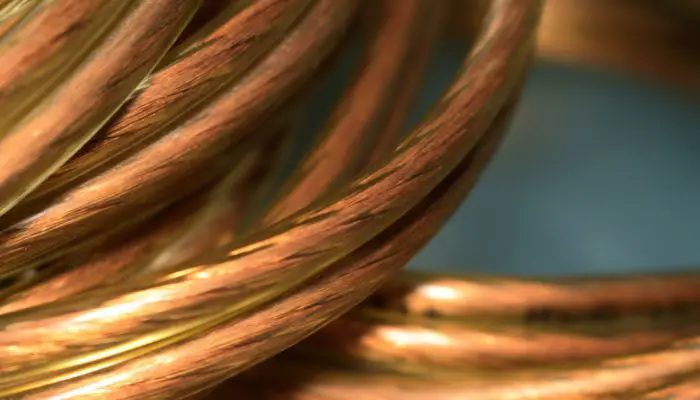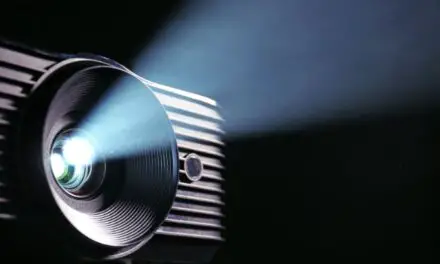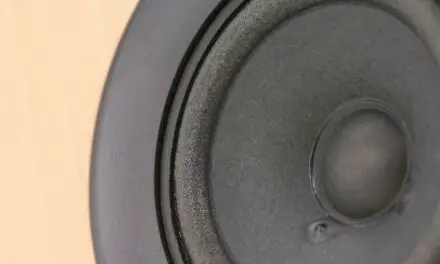A subwoofer cable matters, especially when it comes to audio quality. A cable with excellent shielding provides much better signal clarity than a cheap one with subpar shielding. They’re important enough that you want to leave them alone and undisturbed.
You’ve probably noticed that if the cable gets bumped, you get some clear audio disturbance, especially if it’s not a premium cable with really good shielding. Most people tuck them away, and they end up collecting a lot of dust if you don’t pull the sub out every now and then.
This naturally leads to the question—does all that dust and sitting affect the cable as well and will a subwoofer cable eventually go bad?
Table of Contents
Can A Subwoofer Cable Go Bad?

It’s possible that a subwoofer cable could go bad all on its own, but it’s highly unlikely and entirely preventable. Unless there is a defect somewhere, the cable should be fine as long as the sub is fine. Residue, like the above-mentioned dust, can be problematic, however.
There’s a reason that cables come with shielding and it’s not just with subwoofer cables. The shielding is designed to prevent interference from exterior elements, which is probably why it’s called “shielding.” Who knew?
If you use a budget subwoofer cable, you may hear some distortion creeping through because it won’t be as shielded as a more premium cable. It’s possible that you could mistake this distortion for the cable having gone bad when it is just because the cable is low quality and not keeping interference out well enough.
A quality subwoofer cable shouldn’t give any problems unless a lot of dust has been allowed to build up or something has happened to physically damage the cable. It’s highly unlikely it will go bad for no reason.
It’s worth investing in a good cable. You can check reviews online, but usually, Mediabridge subwoofer cables are of great quality.
In some cases, the subwoofer cable is integral to the entire system, depending on what you’re working with and how it’s set up.
Subwoofers come with RCA cables, which stands for Radio Corporation of America. While they are capable of carrying video, their primary use is to carry an audio signal.
How To Tell If Your Subwoofer Cable Has Gone Bad?
Take a good look at both ends of the RCA cable. Make sure there are no cracks in the insulation sleeve, no exposed cable wire, and no material caught inside of the jack on either end. If the cable is covered in a thick layer of dust, you need to clean it off.
If everything looks fine with the subwoofer cable, you can do something called a buzz test to see if it is working as it should.
First, completely power off your sub and connect the cable to the LFE port. Once the cable has been plugged in, you can turn the subwoofer back on, turn the gain all the way up and place your finger on the very tip of the other end of the cable. If you hear a buzz, the cable should be okay.
If you don’t hear any buzzing, the cable may have gone bad.
If you have another subwoofer cable, repeat the process and see if you hear buzzing this time.
You could also put on a movie or some music and listen for distortion. Just be aware that a poor-quality subwoofer cable may sound distorted while a quality one will not.
Distortion can mean a lot of things, and the cable is usually the least likely component to cause a problem but it is easy to check.
If the cable seems okay but the problem persists, check the subwoofer itself for any cracks or damage. It may not be the cable that is causing audio distortion in your sub, though a bad cable will certainly do that.
Related Article: Will A Cracked Subwoofer Still Work? (And How To Fix It)
What To Do If Your Subwoofer Cable Has Gone Bad?
If your subwoofer cable has gone bad, the only thing you can realistically do is replace the cable. Most subwoofers use an RCA cable, and some of the newer, premium cables are often called, “subwoofers.” A subwoofer cable is really just an RCA cable on steroids.
It’s kind of like the difference between a Cat5 cable and a Cat6 cable. It’s essentially the same thing, with some notable upgrades, primarily in the shielding. You should do your best to eliminate the cable before you go and buy a new one, just to be sure.
But if it’s cracked or the shielding is compromised, it’s best to go pick up a new one. RCA cables aren’t incredibly expensive. Just be sure to pick up something that is extensively shielded and preferably gold-plated.
How To Maintain Your Subwoofer Cable
Maintaining your subwoofer cable is a pretty simple task. The most important thing to avoid is allowing the cable to become crimped (pinched or folded). This can happen pretty easily if you attach the cables and then push the speaker back against the wall or into a corner.
- Give your sub cable some space
- Keep it out of a high-traffic area
- Use a toothbrush to clean it occasionally
- Use a Q-tip to clean out the inside of the jack
- Read your manual
Avoid setting anything down on top of your subwoofer cable or allowing the dust to get out of control. You don’t need any soap, and you certainly don’t need alcohol. A toothbrush works pretty effectively since the insulation on RCA cables is often a dust magnet.
Use a dry Q-tip to clean out the inside of the RCA jacks, but that’s not something you have to do but once, maybe twice, per year. Keep the cable out of high-traffic areas or anywhere that it might get bumped or pulled, and avoid allowing it to crimp up in any way.
Try to check out your manual. It will provide valuable information on your subwoofer and the cable that goes with it.
All Things Considered
In all honesty, if something goes wrong with your subwoofer, you want it to be the RCA cable. It’s literally the cheapest and easiest fix.
Unfortunately, it’s rare for a subwoofer cable to just go bad, without some sort of outside event affecting it.
Either way, RCA cables are cheap, effective, and a really good one won’t set you back too much should the need to replace yours ever arise.



